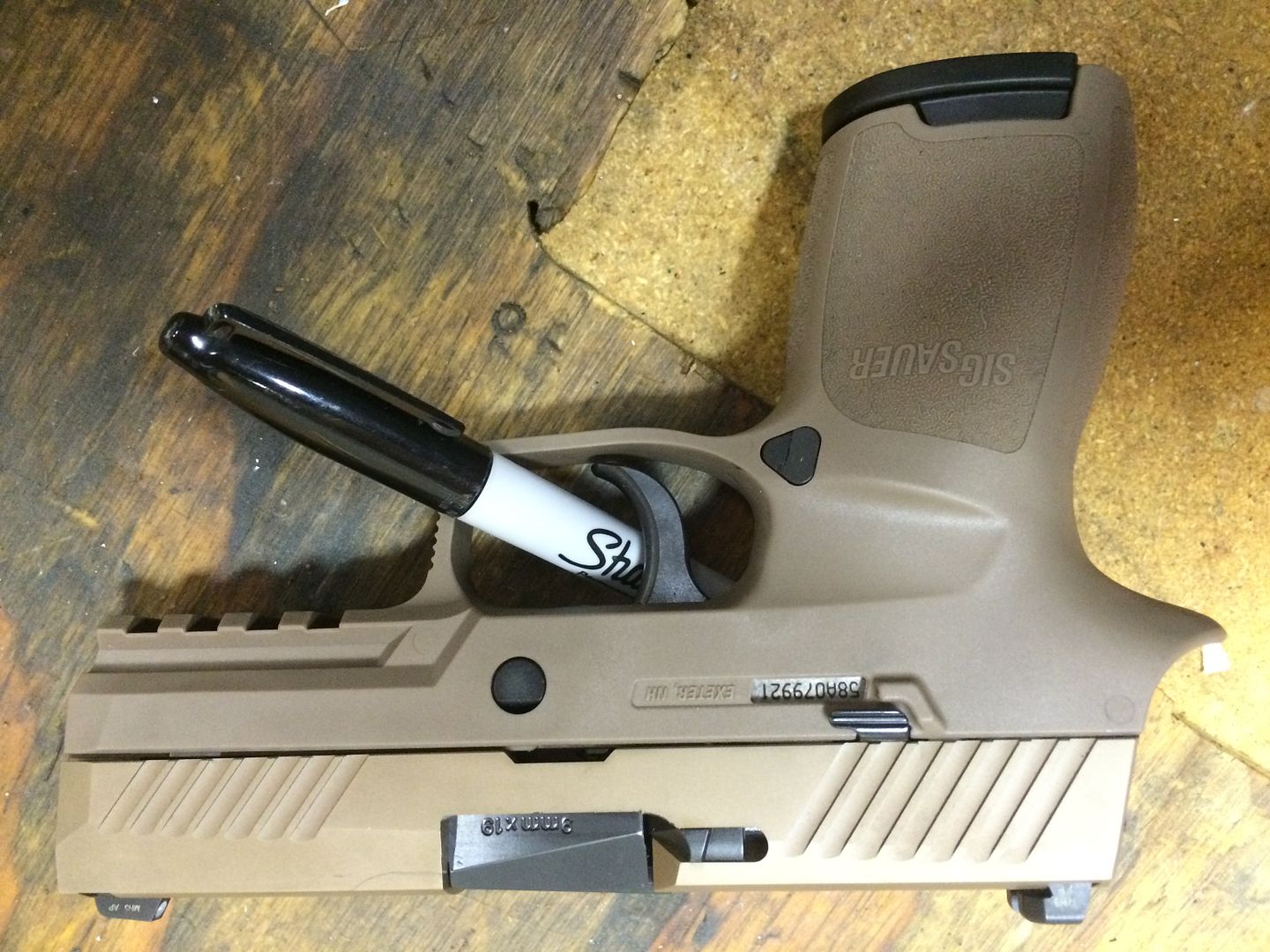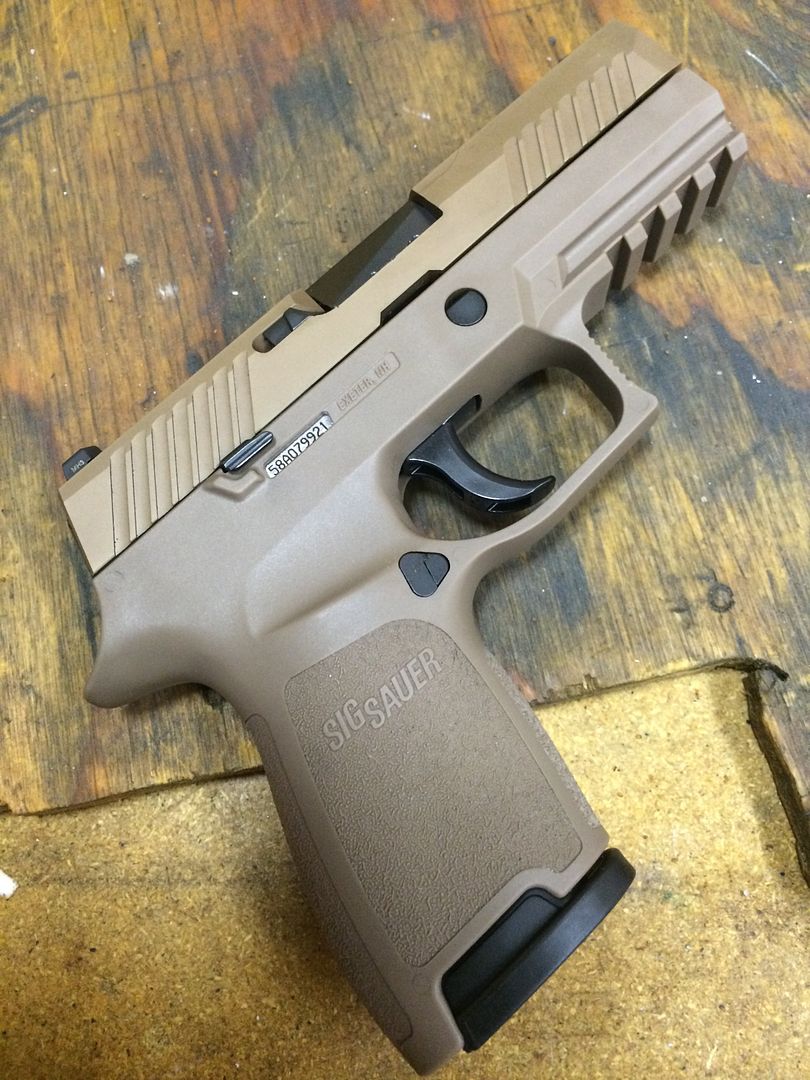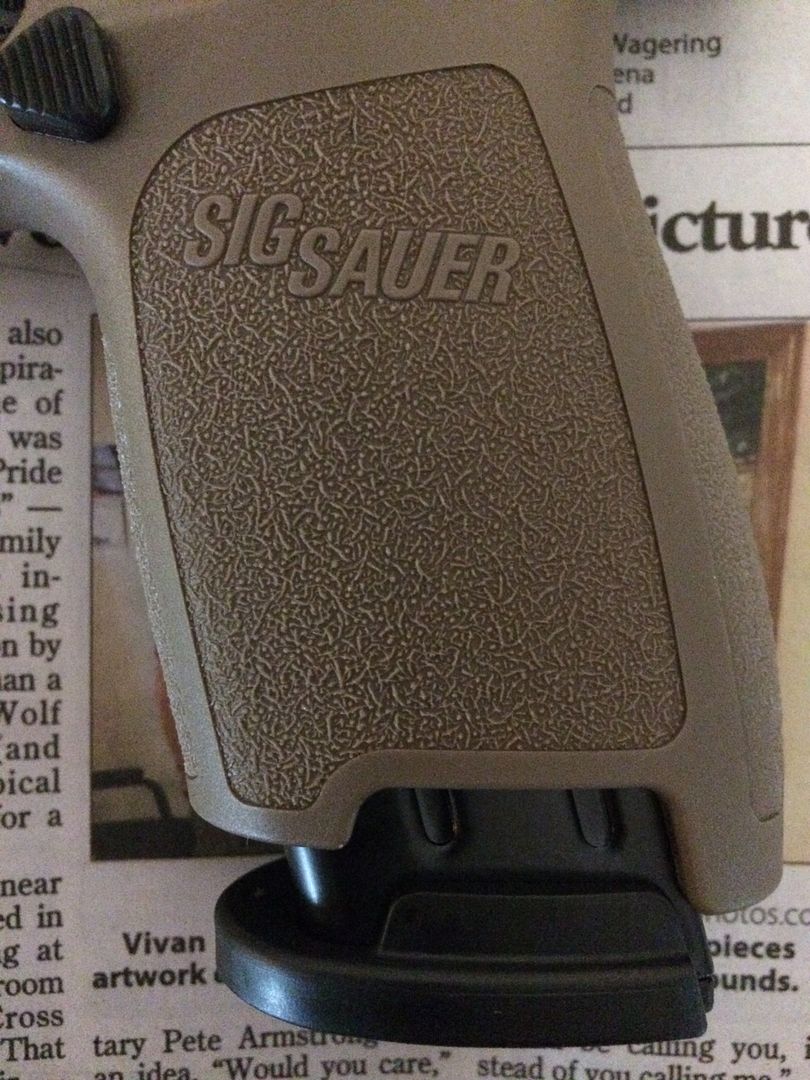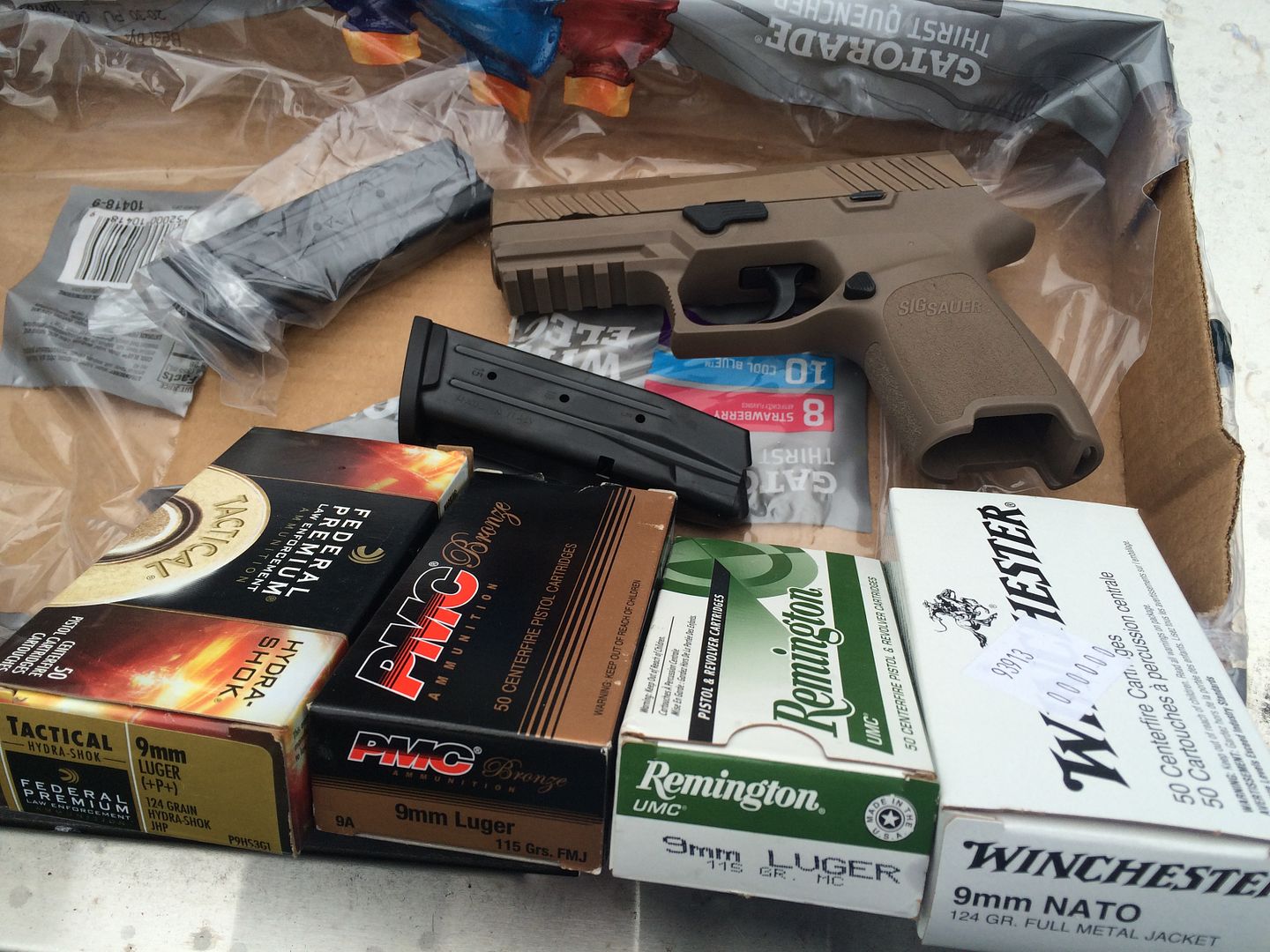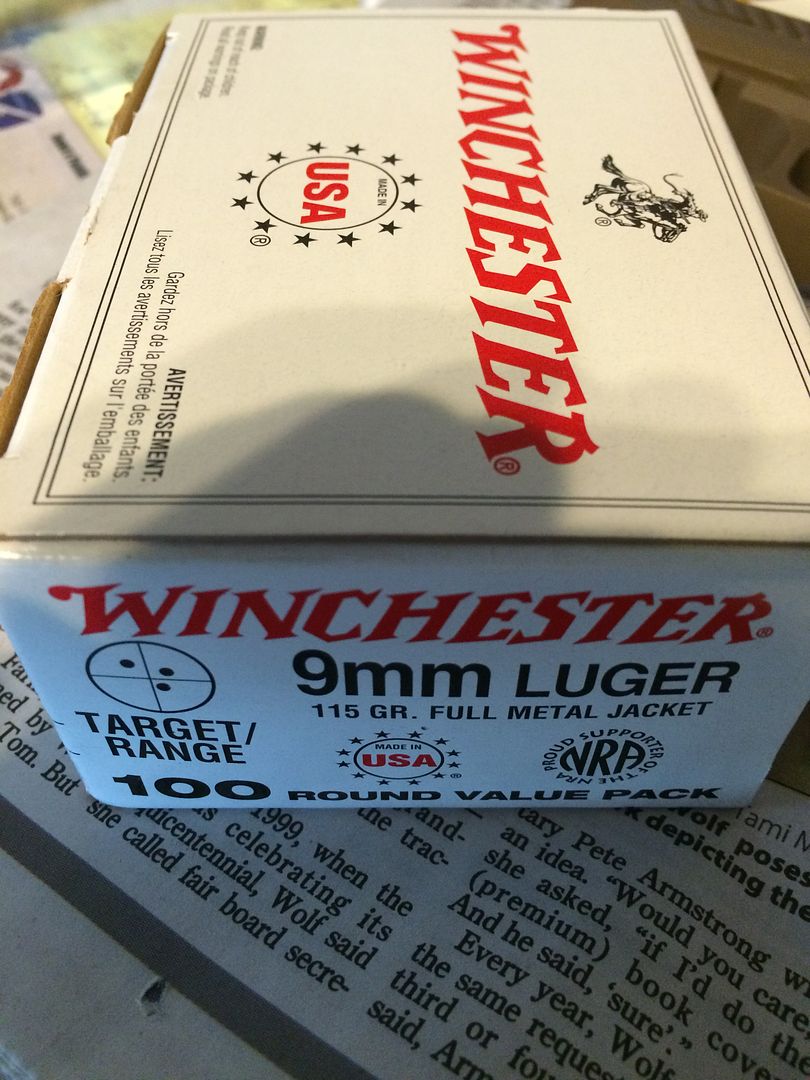M-Quigley wrote:TSiWRX wrote:
A range toy is one thing, but a defensive weapon and its magazines/ammo should always be vetted.
Had a question though, what is or should be the definition of "vetted"? Obviously it should be test fired with your particular flavor of defensive ammo instead of just practice ball ammo, but what else? One person recently told me that he wouldn't consider it worthy to carry until it's gone 2K rounds without a hitch. I asked him if that's what he did with his Glock, and after a hesitation, said, "Well, no, but it's a Glock"

Later that day we participated in a shooting exercise, and his Glock jammed twice, while my Taurus had no malfunctions, even with aftermarket mags designed for a SIG P226.
He swears it's never happened before, and he could be right. He did some kind of modification or add on prior to the exercise, and didn't test it out beforehand.

He later jokingly claimed (at least I think it was jokingly

) that it was my fault his gun jammed, that the Taurus was bringing some "bad mojo".


Ah, so that's the trick, right? Indeed, what is "vetted?"
I don't think it - at least in the context of a Joe/Jane-LawAbidingLegalDefensiveCarry-Citizen manner - needs to be excessively quantified.
Why?
Because just as in the example you mentioned: there's always that possibility that something weird will happen on that 2,001st or even 20,001st round that is just on the level of sheer bad luck.
That said, I think that the person who suggested that he "wouldn't consider it worthy to carry until it's gone 2K rounds without a hitch" was being just a bit disingenuous if he himself had not asked the same of that very same pistol he had in his hands, regardless of the roll-mark or engraving on its side.
I think that everyone will have their own magic number. That mine may not match yours or any other person's, that I don't think is all that important. Rather, it's about that single person having sufficient faith in the tool that's in their hands. My belief is that for us Joes and Janes, the bare minimum we should ask of our defensive weapons is that it - from the condition that it is usually carried or stored-ready in (i.e. however full of pocket-lint, dust-bunnies, pet-hair, etc.) - be able to successfully discharge its resident magazine/cylinder/clip-full of ammo and, if-so-prepared, the user's identified spare ammunition source (to wit: what's the point of that spare ammo, if it won't successfully function in your weapon when you call upon it?), also in the manner that it is usually kept ready.
Now, how many repetitions of that is necessary in order to "trust" that firearm? Hopefully, with that embarrassing outing above, the shooter you wrote of will decide to heed his own words rather than just preach them, but in-reality, every time we shoot that firearm, we're adding some level of stress and wear. So we wrap back to that sentence I led of with: sure, I'd put more trust in a firearm that I've successfully discharged 500 times versus one that I've only managed 1% or even 10% of that - but I also cannot readily see the stresses I've incurred on the gun via even normal use. And yes, routine maintenance should address such problems, but nevertheless, the specter is always going to be there. There's always this counterbalance.
And, of-course, I could say that the XYZ make model ABC caliber 123 firearm that I shoot as a practice/training/range-only tool has successfully discharged 15K rounds and, with regular maintenance, has been "flawless." But does that really guaranty the same of an identical copy of the same firearm - of maybe a tenth of that round-count - that I've reserved for defensive use?
That's a great question,
M-Quigley. And while I really don't have a definitive answer, I think that we each owe it to ourselves to really sit down and think about what this "vetting" means to us as individuals, and furthermore, to take the time to truly vet what we carry or have set aside as defensive firearms to the standards that we've deemed acceptable, instead going the way of the shooter that you'd cited.

-----
Since this is the "Range Reports" thread, I'll a recent range experience I had that also serves to illustrate the points I made above:
Last October-November, I'd put together an AR from a stripped lower and pre-built upper (I was going to self-build, but I found exactly what I wanted in a pre-made package by BCM). This particular carbine was going to be my new training beater - built with enough consideration for the weight factor so that I could mount a low-power variable scope on it (I want to try this as a way to potentially circumvent my distance-vision issues) and yet still be within what I thought was reasonable for toting around in a dynamic, multi-day class.
I zeroed it in steps. First at an indoor range a the 25 for the BUISs, then at an outdoor range to both confirm as well as to zero the scope. I wasn't really shooting for groups nor pursuing a true zero - just something that "got me in the ballpark" so that when I did go to class with this rifle, I'm not printing in the berm, outright.

Winter rolls into spring, and I go with a couple of friends (including my good buddy
LegoGlock) to a fun range-date, and for the first time, I would get inconsistently inconsistent (

) FTFeeds with PMags. I had three Gen2 PMags on-hand, and they all were somewhat problematic; two of the three failed to lock into the lower outright, and all were near-impossible to seat on a closed bolt. Another friend's Gen3 PMag 40 functioned just fine, as did my 30-round Lancer L5AWMs (of which I brought two with me), but then my 20-rd. AWMs also failed to lock in. Strangely enough, at the indoor range and by myself the two times before, I'd exclusively used 10-round AWMs, and everything had been just peachy.

Among the three of us, we had 4 ARs at the range for the day, with only my BCM/BAD being the non-vetted unit. My DDM4V5LW complete,
LegoGlock's Colt 6920, and our friend's BCM Recce complete with an upper that was pretty much identically spec'ed to mine - all three were proven carbines that had several thousand rounds through each, and had been through multiple multi-day training classes. We were thus able to do a quick and basic troubleshoot by swapping lowers/uppers.
The trouble was isolated to my BAD lower, but none of the three of us could exactly figure out what it was given the limited time we had at the range.
That night, I spent about 10 minutes looking things over, and initially thought that perhaps the aftermarket bolt-catch that I used was out-of-spec. The next day, though, I was able to play around with things a little more, and it then became apparent that instead, it was the magazine catch that was the issue: with this particular lower, spec USGI magazines (I had ten Okay 30-rounders as well as a LMT 30-rounder [which is, in-turn, Okay/NHMGT OE]) latched in without issues, but Lancer L5AWMs were hit-and-miss (my sample size was initially my ten main training/range magazines), particularly when loaded to 28 rds capacity, and PMags (Gen2 30-rounders, also numbering ten total, my secondary training/range mags) were a complete crap-shoot.
I'm all-in for consistency, so I have the same bolt-catch (POF) and mag-release setup on all three of my ARs, with the latter being a Troy unit that's offset on the other side with a BAD extended mag release button. With my other two ARs - the aforementioned DDM4V5LW and a LMT MRP CQB16 - In studying the mag-catch assembly a bit more, I could easily see that the magazine catch, internally, protruded into the body of the magwell noticeably further than the same combination did on my BAD lower.
My first instinct was to cut a bit of threading off of the Troy catch, so that it would thread into the mag release button a bit further, but this turned out to be inconsequential.
Rather, the root of the problem was that the left-hand mag release button of the Troy ambi. catch was interfering with the wider-than-spec'ed body of the BAD Billet Lightweight Lower's outer body cosmetic flaring, essentially levering the entire catch more outward, and thus causing it to fail to latch securely into, particularly, the polymer magazines.
I ended up Dremeling a bit of material off of this lever's contact area with the lower - still leaving plenty to achieve that leveraged action so that it maintains its ability to serve as an ambi magazine release - thus allowing more ingress of the mag catch inside the magwell, which solved the problem.
The next time I went to the range, I was able to prove to my own satisfaction that this was no longer a problem.
So, anyway, that's the long way of saying that vetting isn't necessarily a once-and-done process. I wanted to give this carbine a couple of chances to stretch her legs before I started really beating on her in a class, and it was a good thing that I did, too, because there would have been no way to take the time that I did to get that clarity-of-mind to troubleshoot this, in the middle of a class. That it seemed just fine the two times I'd taken her out previously apparently was just because those particular magazines I used somehow managed to have tolerances sufficient to just make it work.




